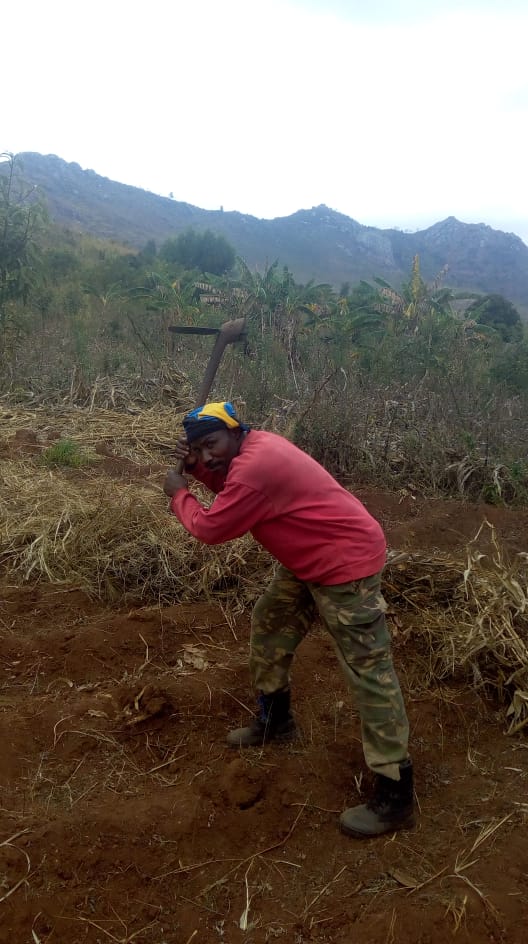- Communication: sending WhatsApp data and having frequent chat about daily life, the difficulties and celebrating together.
- The School: Mpata Primary School is linking with Primary Schools in this Parish to share different learning experiences
- Farming and Irrigation: after loosing a lot of top soil with flooding during cyclone Idai this year has produced a better harvest. The community have helped build a dam which they now wish to line with cement to allow them to collect water for the dry season – to grow more food to sustain themselves
- Tree Planting: Luwatala community have made a tree nursery growing thousands of endogenous trees to plant locally to retain topsoil and replace lost forest.
- The Church: is central to the community, somewhere to worship but also the life force of community projects.
- We hope to learn and share with Luwatala on many mutually beneficial projects. We are inspired by their community spirit and clever use of local resources.

Water!
There are three hand pumps for the entire area. Without any plumbing every drop of water for drinking, washing and cooking is carried from the pumps to each home – usually by the women and girls. This is also the case for watering the crops. One active dam collects rain water which can be channeled the most local fields but the whole valley is full of small plots that need regular water.
Farming.
Subsistence farming. The community need to grow enough food to feed itself. Fertiliser is made from animal dung, ash and waste plant materials but this is not usually sufficient to boost productivity sufficiently. There are some goats (didn’t know they were so noisey!) and chickens. The main crop is maize but pigeon peas, tomatoes, okra, beans and pumpkin are also grown. It is hoped that access to year round water might allow greater productivity. When I sent a photo of a field of sheep here they were amazed to find that sheep were a ‘crop’ and to see how big our fields are.

Chief Joseph sent this photo of himself ploughing his tomato field. The hoe he is using is the only tool he has and the sort traditionally used in subsistence farming.
This June the weather in Malawi is cool (12 degrees) and dry. Fields will not be planted until the rains come in late October.
Typically a family will have 0.6 hectares of land to cultivate; if there is no drought, flood or pests this will be enough to feed itself for 6 or 7 months only.
Chief Joseph says “Farming is my prosperity”